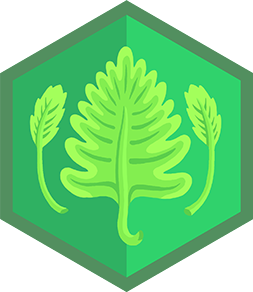Collect seeds
Collect seeds from garden plants and fallen pods, sort and label them, learn identification and safe storage for future planting and observation.



Step-by-step guide to collect seeds
Watch a Seed Sprout! | Squeaks Grows a Garden! | SciShow Kids
Step 1
Put on your gloves so your hands stay clean and safe.
Step 2
Carry your tray and a few empty envelopes to the area of the garden you want to explore.
Step 3
Walk slowly around the plants looking for dry seed pods and seeds on the ground.
Step 4
Pick up only dry or brown pods and fallen seeds and leave green or soft ones on the plant.
Step 5
Gently open a dry pod over your tray and drop the seeds inside without crushing them.
Step 6
Brush or rub any loose bits off each seed onto a paper towel so the seeds are clean.
Step 7
Spread the cleaned seeds on the tray and group similar seeds into small piles by shape and size.
Step 8
Use your magnifying glass and plant guide to identify each pile and decide what plant the seeds came from.
Step 9
Write the plant name the date and where you found the seeds on each envelope with the permanent marker.
Step 10
Put the correct seeds into their labeled envelopes seal them and place all envelopes in the airtight container for storage in a cool dry place.
Step 11
Take a photo or notes of your seed collection and share your finished creation on DIY.org
Final steps
You're almost there! Complete all the steps, bring your creation to life, post it, and conquer the challenge!


Help!?
What can we use if we don't have envelopes or an airtight container?
If you don't have envelopes or an airtight container, fold pieces of paper into small packets, label them with a pen, and seal all packets together inside a zip-top bag for storage.
What should we do if seeds get crushed when opening pods?
If seeds crush when opening pods, hold each dry pod over your tray and gently pry it open with a fingernail or small spoon, then brush loose bits onto a paper towel so you don't crush seeds while cleaning them.
How can we adapt this activity for younger or older kids?
For younger children, an adult can pre-open dry pods and let them sort seeds on the tray by shape and size, while older kids can use the magnifying glass and plant guide to identify species and write scientific names, dates, and locations on the envelopes before photographing the collection for DIY.org.
How can we extend or personalize the seed-collecting project?
To enhance the activity, have the child decorate and label each envelope with the permanent marker, compile a seed ID booklet with photos and plant guide notes, and plant a few labeled seeds in starter pots to compare germination later.
Watch videos on how to collect seeds
What Is Seed Germination? | SEED GERMINATION | Plant Germination | Dr Binocs Show | Peekaboo Kidz
Facts about seed saving and gardening for kids
❄️ The Svalbard Global Seed Vault stores over a million seed samples as a backup to protect global crop diversity.
🏷️ A simple label with plant name, collection date, and location makes seed-saving much easier and boosts planting success later.
🌱 Lotus seeds have been known to germinate after over 1,000 years, proving some seeds can stay viable for centuries.
🐾 Many seeds travel by animals — burdock burrs inspired the invention of Velcro when a scientist studied how they stuck to his dog.
🥥 The largest seed in the world is the Coco de mer, which can weigh as much as 17 kilograms (about 37 pounds).
How do I collect and prepare garden seeds for future planting?
What materials do I need to collect, sort, and store seeds from my garden?
What ages is seed collecting suitable for and how can children participate?
What are the benefits of seed collecting and what safety tips should families follow?


One subscription, many ways to play and learn.
Only $6.99 after trial. No credit card required


